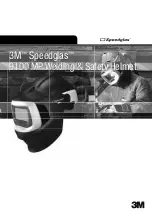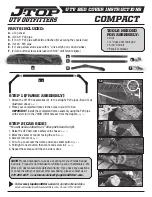
Theory of Operation
Intel® RFID Sensor Platform (Intel® RSP)
2019Q2
Installation & User Guide
Page: 36
338088-002
9.4
Managing Large Tag Populations
The Gateway with Intel® RSP SW Toolkit can segregate a large tag population into several
smaller ones using the Intel® RSP’s sensor to more accurately inventory a tag population
by avoiding collisions. This same functionality can also be used to isolate a single tag that
might be located in a challenging RF environment or perhaps physically oriented in a less
than optimal fashion.
A challenge in managing larger tag populations is dealing with “tag collisions" during the
query-response (more than one tag responding at exactly the same time). The Intel® RSP
Sensor offers an adaptive algorithm (Dynamic-Q) function to mitigate tag collisions. An
adaptive Q algorithm increases the reading efficiency significantly thereby reducing the
time it takes to completely inventory a large tag population. The Intel® RSP Sensor allows
the Gateway to optimally configure the Q Algorithm based on a known tag population.
Dynamic-Q is used by default, which relieves the Gateway from having to explicitly set the
Q-value.
9.4.1
Normal Scan (Dual Target)
This Use-Case illustrates the most common situation where a number of tagged items are
being continuously inventoried on an RFID-enabled “smart shelf" or perhaps an overhead
Intel® RSP Gateway in an RFID-enabled “smart store". This mode will allow multiple reads
per tag for a moderate update of tag status to alert the Intel® RSP system should a tagged
item be moved. No tag filtering is specified.
9.4.2
High Mobility (Dual Target)
This Use-Case addresses the situation where a number of tagged items are being
continuously inventoried, and higher numbers of reads per tag are required to detect tag
mobility.
9.4.3
Deep Scan (Single Target)
This Use-Case illustrates a thorough “Deep Scan" using the most robust RF link to insure
that all tags within the coverage area are successfully read at least once. This mode also
uses suppression to allow weaker tags to respond without competing with the multiple
responses of other tags and is recommended only in situations where multiple reads per
tag is not required. Sessions 2 and 3 are used to provide longer suppression times while
scanning. Alternating between sessions 2 and 3 (and between A and B) allows for a rapid
recovery when rescanning the tag population. This use-case insures that even the most
distant tags with the weakest backscatter signal can be eventually read.
















































